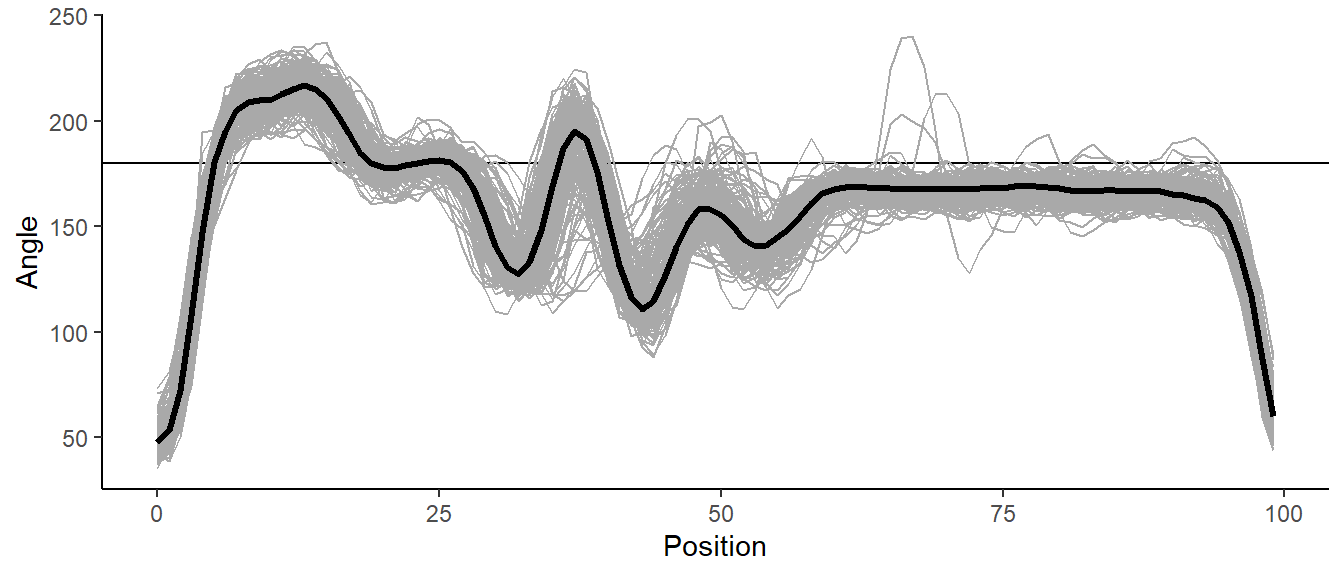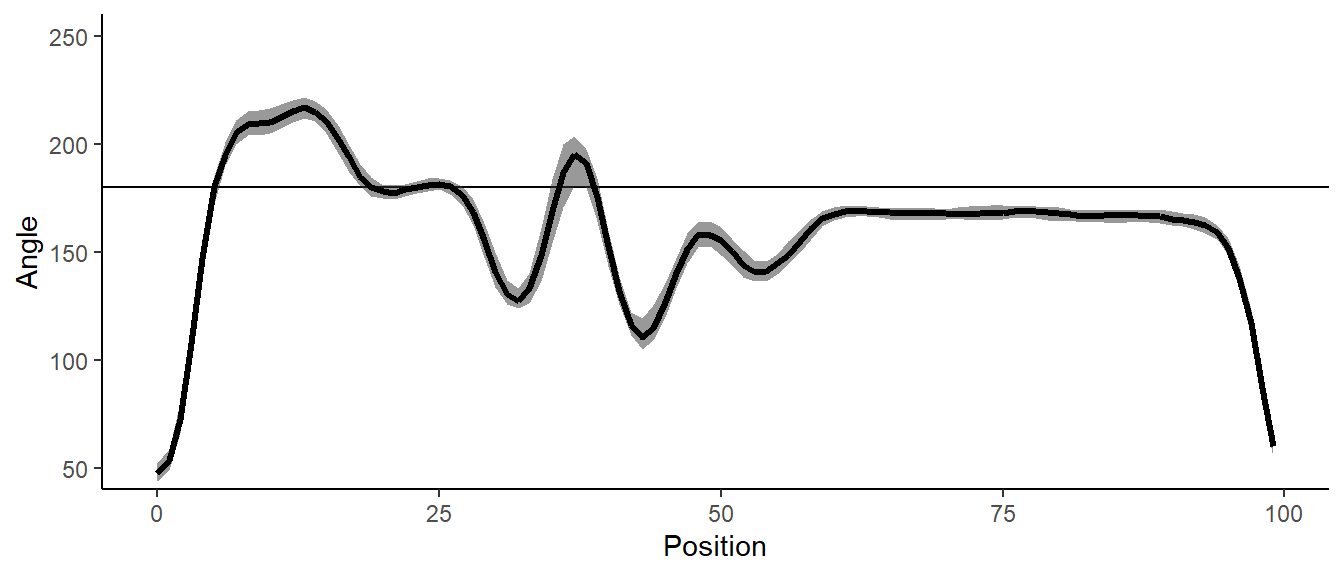Wiki
Clone wikiNuclear_Morphology / data / Angle_profiles
Angle profiling
The method for morphological analysis, described in our paper), allows us to automatically identify nuclei in microscopy images, and then find key landmarks for orientation and measurement. This is performed by generating an angle profile, that describes the shape of the nucleus by measuring internal angles around its perimeter:

No matter the orientation of the nucleus in the image, we can see features such as the hook and the tail attachment point show up show up in the profile:

Local minima and maxima define corners in the nuclear outline, and allow the key landmarks of interest to be found no matter the orientation of the nucleus. These profiles can then be aligned against each other. Here, we have angle profiles from ~400 mosue sperm nuclei aligned against each other, shown in grey, with the median of these values in the black line.

The median profile lets us get a good idea of the overall shape of the nuclei in a sample. We also get some idea of the variation in a population of sperm. If most nucleus profiles are very similar, there is little variation in shapes. If most nucleus profiles are very different to each other, there is a lot of variation in shapes. This can be visualised more easily by drawing the interquartile range of the angles, instead of every profile:

Updated